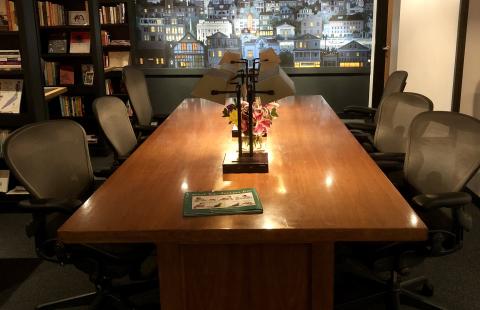What were the specific goals of this creative economy project? Describe the community development challenge or opportunity that your project was designed to address:
Most writers who couldn't focus in their home offices (due to loneliness or distractions) had no place to go beyond noisy coffee shops or public libraries with less-than-comfortable chairs and limited hours. The state's few coworking spaces are relatively expensive and hard to concentrate in due to settings meant more for entrepreneurs and small teams rather than individual creators. They are also not staffed in the evenings or weekends.
The Club's goal was to create an affordable space that was optimal to helping content creators focus and write or illustrate. A key challenge was to make it affordable - but by including a classroom and meeting space in the project which we rent to third parties at market prices, and by registering as a 501c3 nonprofit, we are able to cover some of our costs and thus bring down the cost of coworking to match a typical writer's ability to pay.
Who was involved in this project and what did they do? (be sure to include the partners from outside of the creative sector and how local voices were included):
Local writers helped us select seating and desks - they literally came, sat and gave their opinions on various floor models. Local writers who acted as our beta testers June-October also taught us about the critical importance of silence for their work - we made some significant changes to construction specifications including special ceiling tiles, insulation, white noise machines and a phone room, entirely due to their input.
Providence Community Library Booksale volunteers, particularly those at the city's Knight Memorial branch, helped us source and afford the 1,000+ books for the member library, including hundreds of books on the craft of writing and autobiographies of writers, as well as other useful reference books.
More than two dozen area artists, such as award-winning children's book illustrator Kelly Murphy, provided much of the unique art for the club's walls, including a custom 14' long mural featuring our most beloved local buildings. Local architect Charlotte Handy handled the structural design. The team at Providence Picture Frame, America's second-oldest framing company, framed our art, helped with mural production and assisted us create a gallery-type wall in the seating nook.
Writers spend so much time indoors that we felt fresh flowers would help them feel creatively alive. Local florist Semia, who is known for sourcing as much of her stock as possible from area flower farmers rather than relying on imports, delivers fresh bouquets weekly for key spaces.
How does this project relate to a larger community development strategy?
We hope that the space helps two kinds of community - the first is the community of writers themselves who had not had a place where they might bump into each other routinely - by the water cooler (literally.) The second is by constructing a creative space in the heart of a city's downtown which is increasingly filled with places to live - many office buildings are transitioning to apartments - but few places to work peacefully within the context of a community.
What projects or places, if any, inspired your approach to this creative economy project?
We visited mainstream coworking spaces in RI and MA, and in part learned what not to do for our community who are different from typical workers and 'start-ups'. We were inspired by libraries (our lamps for example are based on lamps from a public library in SF) and most especially by our local landmark the Providence Athenaeum, a library which is notable for having small wooden desks tucked into its stacks. Lastly, we spoke with managers of and toured other shared workspaces for other types of creatives - such as folks at the Providence Art Club, AS220, Ajay Land Company, Hope Artiste Village and the Steelyard.
